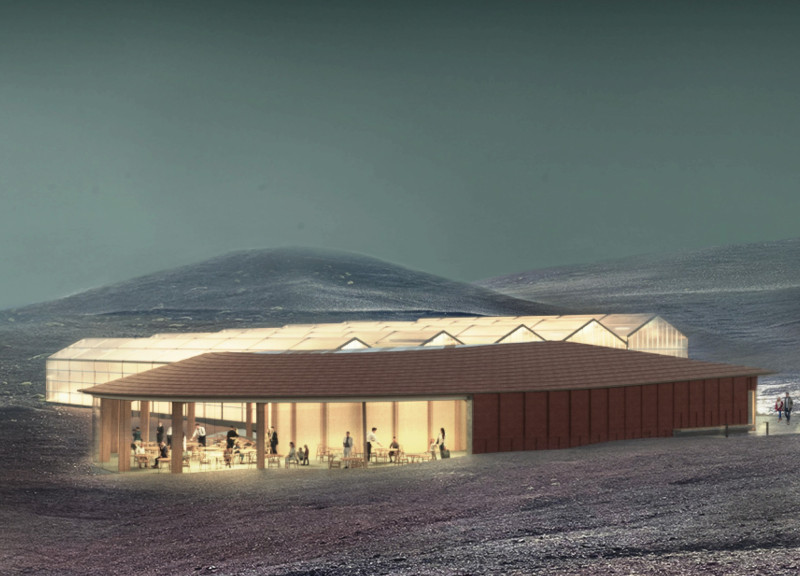5 key facts about this project
Design and Functionality
The primary function of the Iceland Greenhouse Restaurant is to offer a unique dining experience while cultivating fresh produce in its adjoining greenhouse. This dual purpose is central to the design, where visitors not only enjoy farm-to-table meals but also observe agricultural practices in real-time. The layout features an open kitchen that enhances transparency in food preparation, allowing guests to appreciate the culinary processes involved.
One of the unique aspects of this project is its focus on environmental sustainability. The building employs geothermal energy for heating, illustrating an effective use of local resources to reduce ecological impact. Additionally, a rainwater collection system serves the greenhouse, reinforcing the commitment to sustainable practices within the architectural framework.
Innovative Architectural Approaches
The architecture of the Iceland Greenhouse Restaurant integrates locally-sourced materials and takes inspiration from the natural surroundings. Cross-Laminated Timber (CLT) forms the structural backbone of the building, offering both warmth and resilience. The Cembrit roof tiles imitate the textured landscape of Iceland, while polished concrete flooring facilitates movement throughout the spaces.
The design features extensive glazing in the dining area, providing unimpeded views of the serene landscape that enhances the dining experience. This deliberate choice not only connects patrons with nature but also showcases the geothermal environment, fostering a deeper appreciation for the setting.
The smaller sections of the greenhouse are intelligently designed to allow for effective climate control, adapting to the specific needs of the plants while simultaneously improving energy efficiency within the restaurant space. This innovative division emphasizes a responsive architecture that prioritizes functionality without compromising aesthetic values.
Sustainable Practices and Community Engagement
The Iceland Greenhouse Restaurant is a testament to the integration of sustainable practices within modern architecture. The emphasis on geothermal energy and water collection reflects a commitment to environmental responsibility, which is increasingly vital within architectural projects today. Furthermore, the space serves as a community hub, inviting both locals and tourists to engage with Iceland's agricultural heritage and culinary scene.
In summary, the Iceland Greenhouse Restaurant stands out as an architectural project that merges functionality with sustainability, making significant strides towards eco-friendly design. For more details on its architectural plans, sections, and innovative design ideas, consider exploring its presentation to gain deeper insights into this remarkable project.


























